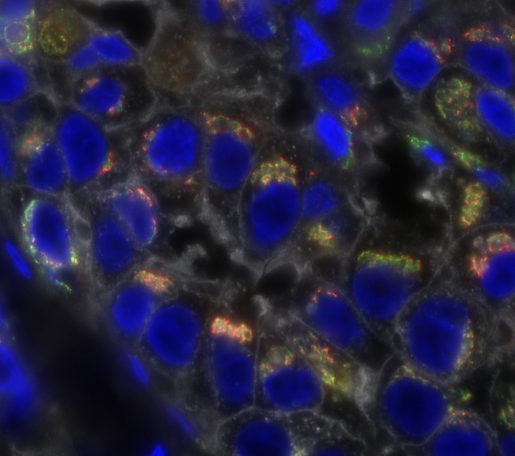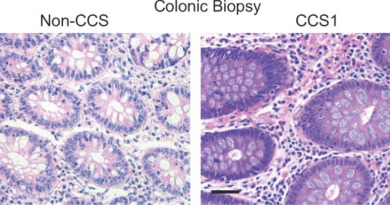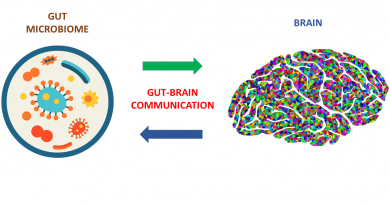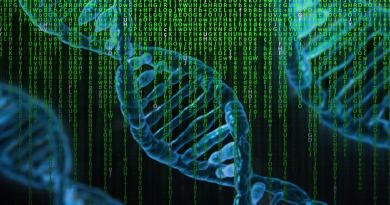Serendipity reveals an opportunity to improve the success of chemotherapy in triple negative breast cancer
Imagine this possible future scenario: a patient has received a diagnosis of triple negative breast cancer (TNBC) and the physician proceeds to decide on a treatment. The physician orders a KIPA test whose results will inform on the tumor’s most likely sensitivity to treatment and outcome after therapy, according to a profile of proteins produced by the tumor. With this tool on hand, the physician can make an informed decision on the treatment with a better probability of success.

Although such a test to predict chemotherapy response in TNBC is not available yet as a standard part of treatment, researchers at Baylor College of Medicine and collaborating institutions are making progress toward that end. The study appears in Cancer Research Communications, a journal of the American Association for Cancer Research.
“Multiple research innovations in cancer diagnostics are on display in this work,” said co-corresponding author Dr. Matthew Ellis, member of the Lester and Sue Smith Breast Center and the Dan L Duncan Comprehensive Cancer at Baylor and also senior vice president of early oncology and oncology R&D at AstraZeneca.
Serendipity reveals an opportunity to improve the success of chemotherapy
The researchers used a laboratory assay called Kinase Inhibitor Pulldown Assay, or KIPA, to search for proteins they could target to control tumor growth. They searched for these proteins in 43 frozen tumor biopsies that were part of the previous Clinical Proteomic Tumor Analysis Consortium (CPTAC)-TNBC study.

“Our initial goal was to find new ways to control TNBC growth, specifically by identifying and then inhibiting enzymes called kinases produced by the tumor to assist on its growth,” said co-corresponding author Dr. Meenakshi Anurag, assistant professor of medicine at the Lester and Sue Smith Breast Center at Baylor. “Although our search for such kinases did not produce valuable candidates, it unexpectedly revealed an opportunity to improve the success of chemotherapy.”
KIPA works by coating tiny beads with selective kinase inhibitors, then breaking down the cells in the biopsy samples and mixing them with the beads. Each kinase binds to its specific inhibitor, effectively separating it from other cell components, though some kinases can bind to multiple inhibitors. Then, the researchers collect and wash the beads, obtain the kinases and use mass spectrometry to identify each one of them.
“This approach did not reveal kinases we could potentially target to control these tumors’ growth; however, the assay captured seven non-kinase proteins, specifically purine-binding proteins, that were enriched in tumors that completely responded to treatment,” said first author Junkai Wang, a graduate student working in the Ellis lab.
Further analyses showed that this seven-purine-binding protein signature predicted chemotherapy sensitivity and favorable clinical outcomes.”
“The purine binding signature could help identify a subset of TNBC patients who should receive investigational therapy from the outset rather than an ineffective standard chemotherapy approach,” Ellis said.
“Although originally KIPA was developed for the accurate quantification of druggable kinases, this paper demonstrates that its clinical utility extends beyond kinase quantification. With more clinical sample analysis, there is a great possibility that we will be able to identify additional signatures for many therapeutic strategies,” said co-corresponding author Dr. Beom-Jun Kim, member of the Lester and Sue Smith Breast Center and the Dan L Duncan Comprehensive Cancer at Baylor and also associate director of diagnostic proteomics at AstraZeneca.
“We are excited about these findings, which we have validated in multiple TNBC cohorts,” Anurag said. “In addition, KIPA offers other advantages: it produces results in a time-efficient manner and requires a much smaller tumor sample than other methods.
The purine-binding protein signature we have identified has the potential to contribute to clinical trials designed to either escalate or de-escalate therapy by predicting the probability of chemotherapy success.”
Other contributors to this work include Alexander B. Saltzman, Eric J. Jaehnig, Jonathan T. Lei, Anna Malovannaya, Matthew V. Holt, Meggie N. Young, Mothaffar F. Rimawi and Foluso O. Ademuyiwa. The authors are affiliated with one or more of the following institutions: Baylor College of Medicine, Lester and Sue Smith Breast Center and Dan L Duncan Comprehensive Cancer Center at Baylor, Siteman Comprehensive Cancer Center and Washington University School of Medicine – St. Louis and AstraZeneca.
This work was supported by the CPRIT Recruitment of Established Investigators Award (RR140033), NIH/NCI CPTAC (U01CA214125), NIH/NCI Breast SPORE grant (P50 CA186784), NCI-SPORE Career Enhancement and Developmental Research award (part of P50 CA186784-06) and Translational Breast Cancer Research Training Program grant T32CA203690. Further support was provided by the Dan L Duncan Comprehensive Cancer Center Award (P30 CA125123) and CPRIT Core Facility Awards (RP170005 and RP210227) to BCM Mass Spectrometry Proteomics Core and NIH/NCI K12 Award (CA167540). This work was also supported by generous gifts from the Korell family and Lisa and Ralph Eads, and a McNair Scholar with additional support by the McNair Medical Institute at The Robert and Janice McNair Foundation.



